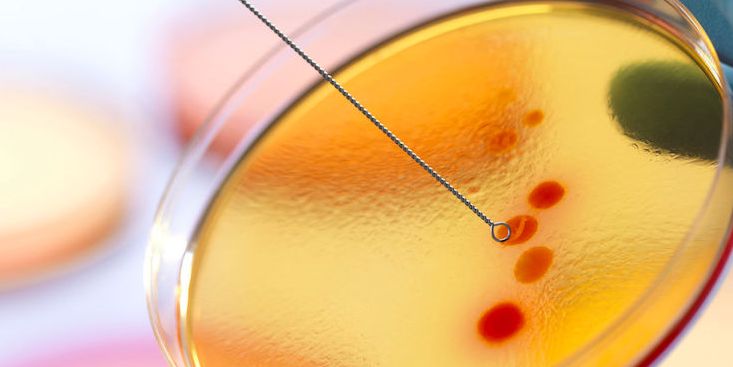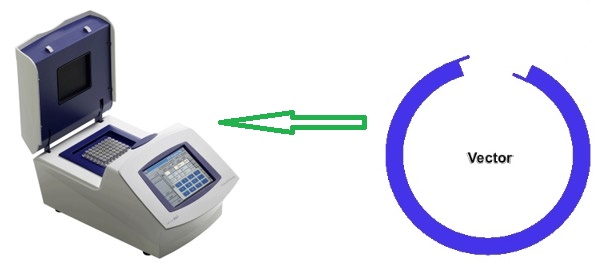The field of medicine has in the past decades seen the production of many biotherapeutics and/or drugs from genetically modified organisms (GMOs). Many safer and cheaper vaccines and other drugs have been produced from GMOs. For example, injectable insulin (which is used to treat and manage diabetes mellitus disease in diabetic patients) was traditionally produced from the purification of proteins obtained from the cells, tissues or organs of humans and animals like pig and cow. But this traditional method of obtaining this important therapeutic agent was associated with several demerits including the immunological challenges it posed to humans receiving proteins from non-human animals and the limited supply of the animal insulin.
But today, human insulin can now be produced in sufficient amounts from GMOs. In 1982, the first recombinant therapeutic protein molecule (human insulin) for human use was produced from a genetically modified or engineered Escherichia coli that contained the human insulin genes. This human insulin is currently used to treat diabetes patients worldwide. And since then, several therapeutic protein molecules including recombinant vaccines, tissue plasminogen activator (for stroke or heart attack patients), interleukins and interferons (IFNs) have been produced from genetically modified microorganisms (GMMs).
Microbes are currently been studied for the production of edible vaccines that can be produced in the consumable parts of plants such as the fruits, and which can be directly absorbed into the bloodstream to provide protective function when such plant part(s) is consumed. GMOs and/or GMMs are also being considered to provide possible therapeutic effect for the treatment of molecular diseases such as cancer and other genetic disorders in humans.
APPLICATION OF GMOs IN AGRICULTURE
New varieties of plants or crops can now be produced through recombinant DNA technology; and such crops have improved properties such as resistance to pest, improved taste and quality, resistance to environmental stress, resistance to pesticides/herbicides and resistance to disease. Transgenic plants have been engineered for scientific research, to create new colours in plants, and to create different crops with improved yield. These crops whose DNA have been genetically engineered to produce different varieties of qualities are generally known as genetically modified crops or plants.
In the production of genetically modified crops, plant species lacking certain good qualities are genetically engineered by introducing in them those traits that they naturally lack so that they can go on to express these features as aforementioned. Some countries like the United States of America have some genetically modified foods including corn, rice and soybeans that have been approved for human consumption.
Genetically modified crops possess several benefits to agriculturists and farmers. For example, crops can be genetically engineered to be resistant to pests and diseases. And if this can be achieved, it will go a long way in saving cost because the money expended in controlling pests and diseases in the farmland can be channeled for other useful ventures. Bacillus thuringiensis is a Gram positive bacterium that possesses a gene responsible for producing BT toxin – a naturally occurring insecticide found in Bacillus thuringiensis.
This gene can be genetically introduced into certain crops so that they will naturally produce BT toxin that will help to control pest infestation in the farm even without using any form of chemical insecticide. It is also noteworthy that golden rice (genetically engineered rice) now exists in the market worldwide; and this species of rice has been endowed with genes that help to produce important vitamins and minerals in the consumers.
APPLICATION OF GMOs IN ENVIRONMENTAL MANAGEMENT
Genetically modified organisms (GMOs) are being considered as possible clean up agents to control environmental pollution especially through the process of bioremediation. Some microbes including Pseudomonas fluorescens are naturally endowed with genes that degrade oil and other metals in the environment. The genetic engineering of such gene could lead to the production of strains of the organism that can carry out commercial clean up exercise in the face of heavy environmental pollution.
Genetically modified organisms or microorganisms (GMOs/GMMs) including plants, animals and microbes are currently being developed to solve several challenges of mankind especially in the areas of medicine, industry, environment and biomedical research. GMOs/GMMs are developed to research human diseases and to improve animal health. They are also being developed to produce consumer products and pharmaceutical therapeutic products including vaccines and drugs.
GMMs/GMOs are also being developed to enhance the quality of food sourced from animals and plants as well as to produce animals and plants with improved varieties and high yields. Irrespective of their many advantages, GMOs/GMMs still possess some safety concerns that still restrict their wider acceptance in some parts of the world. Nevertheless, proper regulation and improvement of the gains of GM foods and products should be encouraged with the view to producing products that are sustainable and can be widely acceptable.
References
Bains W (1998). Biotechnology: From A to Z. 2nd ed. Oxford University Press, New York, USA.
Bourgaize D, Jewell T.R and Buiser R.G (1999). Biotechnology: Demystifying the Concepts. Pearson Education, San Francisco, CA.
Brian Robert Shmaefsky (2006). Biotechnology 101. Greenwood Publishing Group, Inc, USA. Pp. 1-273.
Bushell M.E (1998). Application of the principles of industrial microbiology to biotechnology (ed. Wiseman, A.) Chapman and Hall, New York. Pp. 5–43.
Byong H. Lee (2015). Fundamentals of Food Biotechnology. Second edition. Wiley-Blackwell, New Jersey, United States.
Chrispeels M.J and Sadava D.E (2002). Plants, Genes, and Crop Biotechnology. 2nd edition. Jones and Bartlett Publishers, Sudbury, MA.
Clark D.P and Pazdernik N (2010). Biotechnology. First edition. Elsevier Science and Technology Books, Amsterdam, Netherlands.
Das H.K (2010). Textbook of Biotechnology. Fourth edition. Wiley edition. Wiley India Pvt, Ltd, New Delhi, India.
Dictionary of Microbiology and Molecular Biology, 3rd Edition. Paul Singleton and Diana Sainsbury. 2006, John Wiley & Sons Ltd. Canada.
Glick B.R and Pasternak J.J (2003). Molecular Biotechnology: Principles and Applications of Recombinant DNA. ASM Press, Washington DC, USA.
Godbey W.T (2014). An Introduction to Biotechnology. First edition. Woodhead Publishing, Cambridge, United Kingdom.
Jee C and Shagufta (2007). Environmental Biotechnology. APH Publishing Corporation, Darya Ganj, New Delhi, India.
Lee S.Y, Lee D.Y and Kim T.Y (2005). Systems biotechnology for strain improvement. TRENDS in Biotechnology, 23(7):349-356.
Discover more from #1 Microbiology Resource Hub
Subscribe to get the latest posts to your email.



